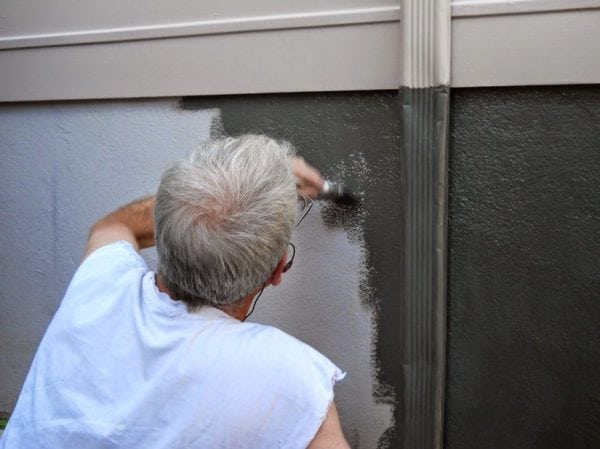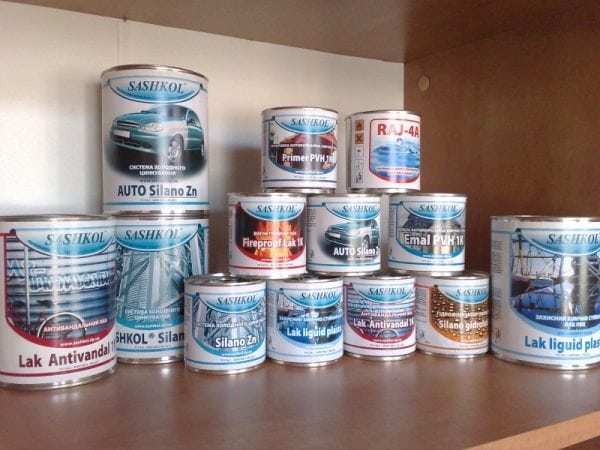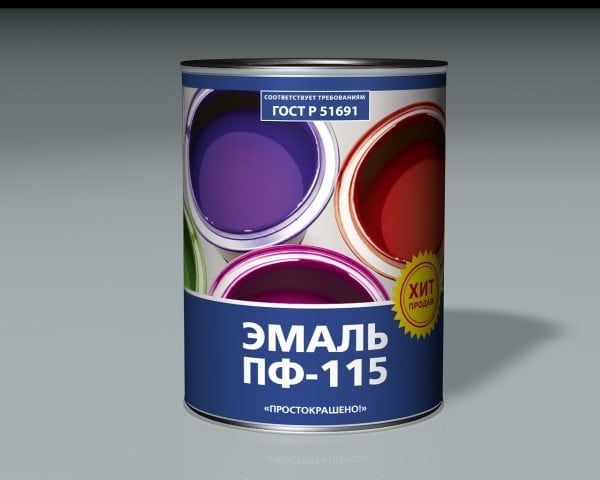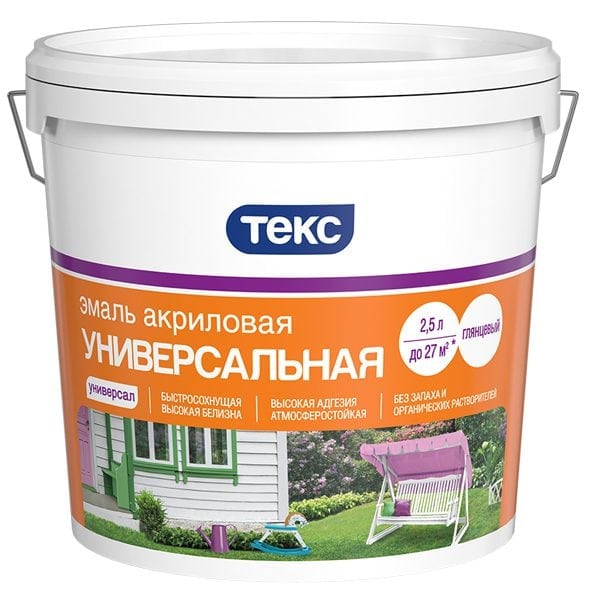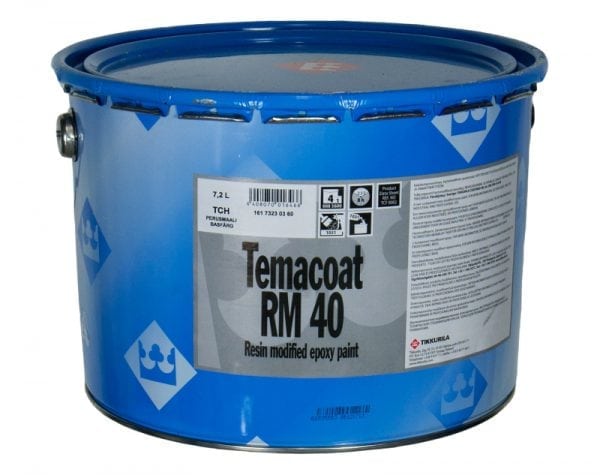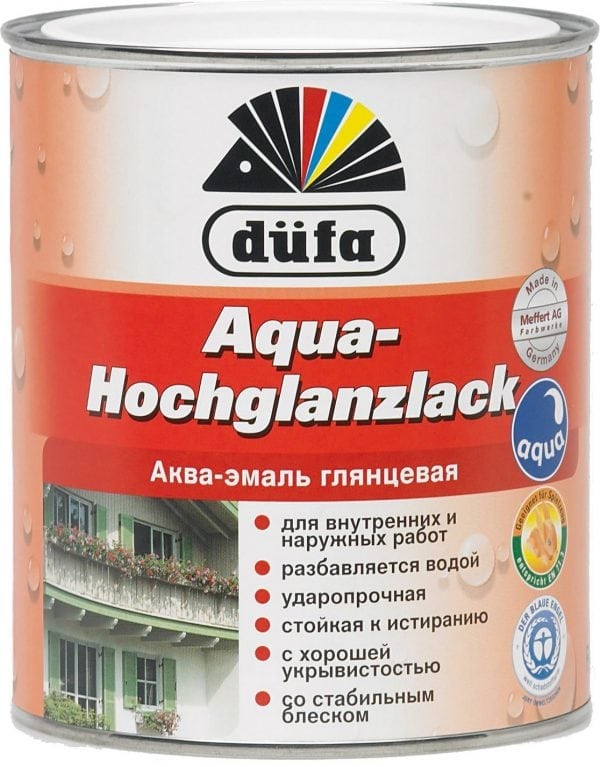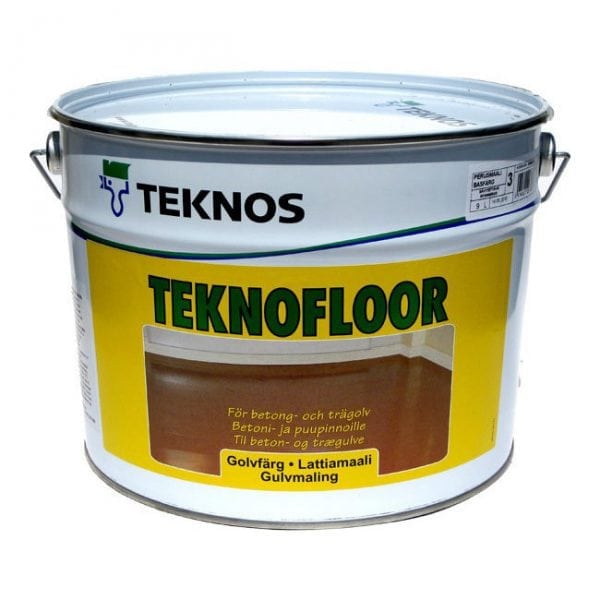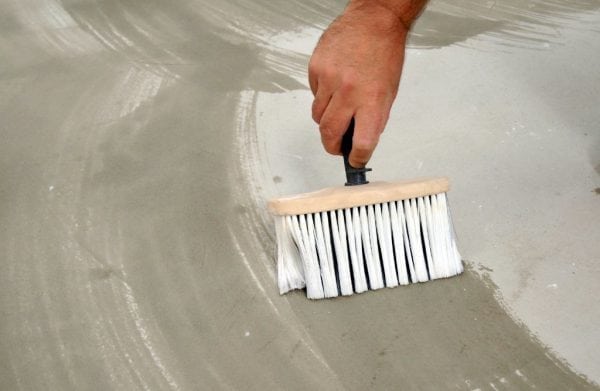Painting a garage, on the one hand, seems to be an insignificant event, because usually no special aesthetic requests are made to this room. However, not everything is so simple, since the coating in the garage should meet a number of requirements: be inexpensive, but durable and resistant to all kinds of manifestations of the external environment. We will talk about how to paint the walls in the garage in this article.
- Paint requirements
- Paint selection
- Pentaphthalic Enamel
- Acrylic paints
- Epoxy paints
- Alkyd paints
- Polyurethane Enamels
- Garage painting
- Work Tools
- Concrete surface painting
- Metal painting
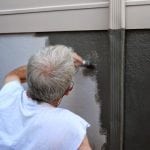
Paint requirements
The paintwork must comply with the conditions in which the garage is operated:
- According to statistics, only every twentieth garage is heated on an ongoing basis. In other cases, there is no heating system. Lack of heating in damp conditions leads to the formation of mold. Thus, the paint should contain bactericidal additives, and also have resistance to low temperatures. If there are no bactericidal substances in the paint, it is necessary to coat the surface (both outside and inside) with an antiseptic composition before painting.
- The coating should not be too light or bright, since the conditions in which the garage is operated suggest the presence of dirt, soot and dust. The best option for a color background is dark and non-fading.
- If the garage is often cleaned, then due to the above reasons, the surface will have to be wiped off quite intensively. Another recommendation follows: the coating should be resistant to abrasion.
- The material to be painted must also be considered. For concrete, one type of paint is better; for metal, another.
- Paint and varnish material must be fireproof, since there are fuels and lubricants in the garage.
- Coatings (especially the floor) must be resistant to mechanical stress.
- The garage is operated under conditions of interaction with chemicals: drops of oil or gasoline fall on the floor, exhaust fumes penetrate into the air, etc. Therefore, the paint must be resistant to aggressive environments.
- The coating must be resistant to odor absorption.
- If we are talking about a metal garage, anti-corrosion additives should be present in the paint.
How to paint a concrete floor in a garage read this article.
to contents ↑Paint selection
The most common types of paints used for painting garage rooms are pentaphthalic, acrylic, epoxy, alkyd and polyurethane. Below we consider each of them in more detail.
Pentaphthalic Enamel
This is perhaps the most affordable option for painting a building. Most often, PF-115 enamel is used. At the same time, the use of this enamel is not recommended for concrete walls.
The main reason for the popularity of pentaphthalic coatings is their high resistance to moisture, since the coating is protected by a dense hydrophobic film.
In addition, the coating does not fade, since the garage does not have direct sunlight. The success of using pentaphthalic enamels directly depends on the quality of the preliminary preparation of the surface.
to contents ↑Acrylic paints
Water-based acrylic paints are often used for painting garages.Reasons for the popularity of aqueous emulsion formulations:
- Resistance to abrasion.
- The ability to maintain the performance of the coating at temperature extremes.
- Moisture resistant.
- The coating maintains integrity both after dry and after wet cleaning.
- On sale there is a rich gamut of colors of acrylic paints.
- The coating has an antistatic effect, as a result of which less dust settles on it.
The main disadvantage of acrylic is its high cost.
to contents ↑Epoxy paints
Before application epoxy paint it is not necessary to prime the surface, while to create a high-quality coating, only one layer is enough. Epoxy paint has other advantages, among which:
- excellent adhesion (adhesion of different materials);
- resistance to mechanical stress (elasticity and impact resistance);
- resistance to aggressive chemical environment (solvents, alkalis, acids, exhaust gases, fuels and lubricants);
- moisture resistance;
- the coating is easily cleaned of dirt.
The disadvantages of epoxy paints include the following:
- yellowing of the surface as a result of heating;
- instability to ultraviolet;
- long drying times.
Alkyd paints
Alkyd coatings are also often used for painting garages.
Advantages:
- single component;
- reasonable prices;
- relatively low requirements for the quality of surface preparation;
- resistance to atmospheric influences;
- excellent adhesion with various materials (wood, concrete, metal, plaster);
- high interlayer adhesion.
Disadvantages:
- The coating dries for a long time.
- Contains a large proportion of organic solvent.
- The layer is quite thin.
- The minimum temperature for staining is 5 degrees above zero.
- Weak resistance to high humidity and chemicals.
Polyurethane Enamels
Advantages:
- abrasion resistance, high elasticity;
- a significant proportion of solids;
- thick enough layer;
- resistance to aggressive chemical environment;
- water resistance.
Disadvantages:
- two-component;
- the surface must be prepared very carefully;
- large technological breaks after applying the layers;
- toxicity.
Garage painting
The work of painting the garage consists of several stages: selecting tools, preparing the surface and applying paint. It should also take into account the peculiarities of painting concrete and metal surfaces.
Work Tools
Paint is applied by one of three tools:
- The roller. It is used for processing smooth surfaces over large areas. Depending on the type of paint, a type of roller is also selected. For example, a foam roller is best suited for an aqueous dispersion, and a medium-length fur one for a water-emulsion dispersion.
- With a brush. It is used for coloring relief and small surface areas. Brushes are often used to work with paints and varnishes based on organic solvents.
- Airbrush. The main advantage of the spray gun is the speed of the work. Where you need hours to work with a brush, you can apply paint with a spray gun in a few minutes. Among the modifications of spray guns for painting the garage, those models that are capable of working with dense compositions are most suitable. The nozzle of such modifications should have a larger diameter in comparison with the others, this will allow more dense paint to be sprayed freely. However, a spray gun is not a solution available to everyone due to the high cost of equipment.
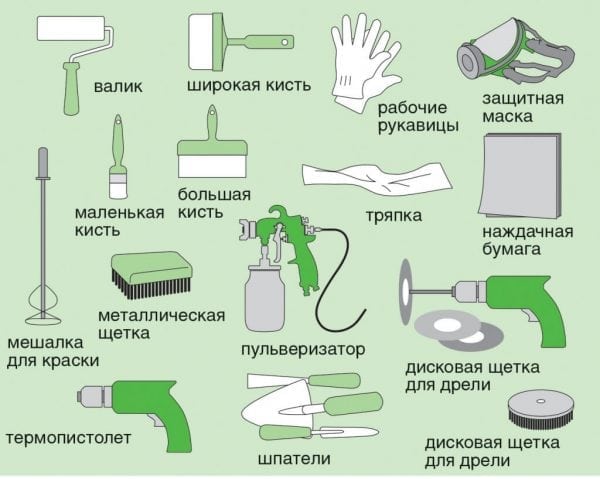
Concrete surface painting
Concrete has a porous surface, and therefore requires a special approach when applying paint. To achieve a high-quality result, you will need to apply three, or even more layers. To reduce paintwork consumption, a special concrete primer is required.
Note! The best time for painting on concrete is summer. Paint should not be applied at temperatures below 10 degrees Celsius. At lower temperatures, the coating will dry for a long time and will not gain the necessary strength.
Work Instructions:
- We clean surfaces from dust and dirt.
- We apply a primer with a roller and wait until the surface is completely dry.
- We mix the paintwork material, add the necessary pigments and solvent to it.
- We will need another small container in which we will dip the roller before applying the paint to the surface.
- When the roller is well impregnated with paintwork, remove excess paint from the side and proceed to painting.
- If we are talking about the wall, paint with vertical movements - from top to bottom.
- The relief areas and small elements are painted with a brush.
- After finishing work, it is recommended to leave the garage door open for a while: this will dry the paint faster. If you need to leave, it is advisable to leave the heater on. Thanks to dry and warm air, the coating dries faster.
Metal painting
How to perform:
- First of all, remove the old paint layer. For this purpose, you will need a metal brush, a building hair dryer or an electric drill with an abrasive.
- Grind the surface with sandpaper.
- Degrease the metal. For this we use an organic solvent.
- Apply 2-3 coats of primer. This will help improve the adhesive characteristics of the surface and prevent the occurrence of rust.
- When the primer layer is dry, remove dirt and dust from the surface.
- We paint with a roller, as in the case of concrete, and paint with movements from top to bottom.
- During the day, wait until the coating dries. Then apply the next layer, but horizontally.
So, when choosing paint for a garage, you should consider the material from which the building is built. You also need to take into account the features of the operation of the room and the climatic characteristics of the area.

